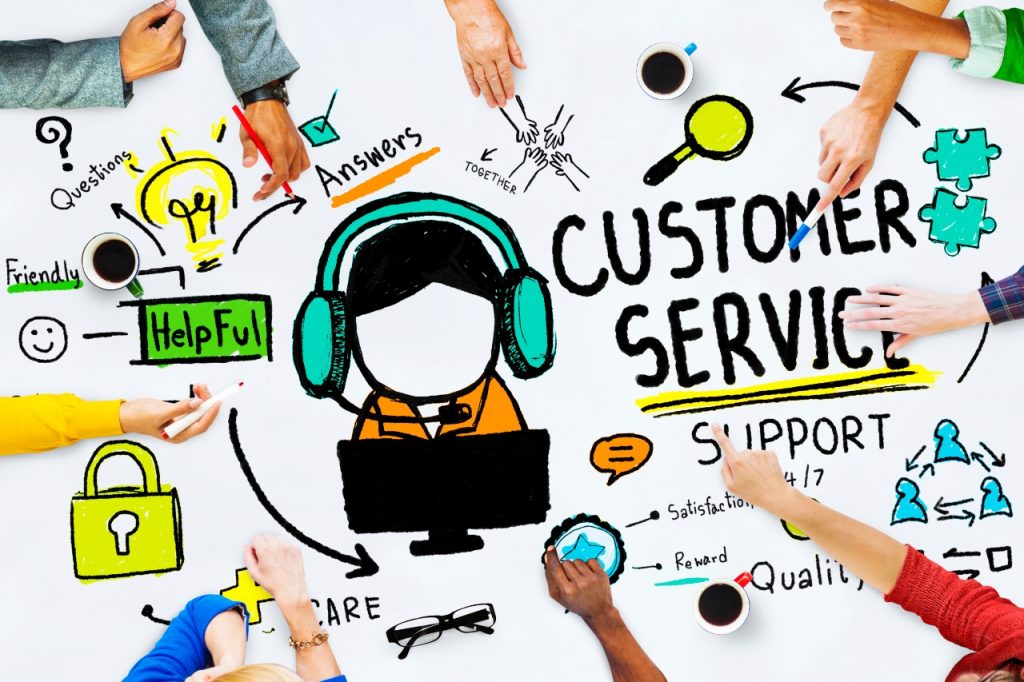As the third decade of the 21st century begins, there are numerous customer service options to utilize. With so many choices available, it’s important for businesses to seriously consider what their customer service will look like going forward. Here are several of the most important technologies that should be at the top of your customer service wishlist going into 2021.
Customer Service Tech to Consider Heading into 2021
1. Set Up Omnichannel Software
Creating an omnichannel experience is essential, not just to make sales but for the customer service opportunities that it provides, as well. The problem is, there are numerous customer service tools available at this point. Phone, text, email, social media, on-site chat, the list goes on. If you want to keep your customer service high-quality and responsive, you need to employ software, such as a CCaaS (contact center as a service), to help put the polish on your customers’ contact center experience. A good CCaaS software solution can:
Route callers to the right representatives. Organize incoming communications from multiple channels. Help with customer relationship management (CRM).
With the number of communication channels and technologies constantly expanding, using a CCaaS to organize things is essential.
2. Steer into Social Media
Social media may have its critics, but it doesn’t change the fact that it’s here to stay. On top of that, it’s used by nearly everyone. This makes it an ideal avenue to reach customers with their complaints, concerns, and general feedback. That said, social media should remain a central piece of your customer service endeavors going forward. However, it should also be approached strategically by:
Avoiding overextending yourself across too many social media platforms at once. Specifically choosing the best platforms for your particular business. Creating clear company guidelines for your brand’s tone, style, and voice in your social media interactions.
Going into 2021, social media should carefully and purposefully remain part of your customer service strategy.
3. Create and Maintain Self-Serving Resources
Providing a human touch remains an important part of many customer service interactions. However, it’s also important to have resources readily available for those who prefer self-help solutions. These resources can take on a variety of different forms, such as: Whatever the format, self-help resources are going to remain an integral part of the customer service process going forward.
4. Invest in Real-Time Chat
Modern customers often are looking for quick answers. They don’t want to wait for days to answer a simple question. This has made on-site chats increasingly more important to a quality customer service offering. On-site chats can consist of both two-way human interactions as well as chatbots. Both options continue to remain popular, with chatbots, in particular, is used to:
Deliver product recommendations. Engage customers as part of a marketing strategy. Provide general customer service.
By steering into real-time chat features, you will enable your customer service team to provide quick, relevant answers right on your website.
5. Don’t Leave the Classics Behind
It’s tempting to always be focused on the newest and the latest. However, there are two aspects of customer service that, while old, remain vital:
Email: Emails continue to be critical for sending longer communications and non-time-sensitive messages. They’re also helpful when it comes to sharing documents and other larger files. Phones: 70% of mobile searchers have used the Call button, and over half of those have done so frequently. Phones are often used for quick answers and additional information and should never be counted out.
Both emails and phone calls continue to remain powerful customer service tools, even going into 2021.
6. Remember Remote Work
Finally, it’s important to remember the effect that remote work can have on your internal customer service system. The coronavirus has spread many customer service teams to the four winds, making remote working tools essential. These include:
Internal collaboration tools like Trello and Asana. Internal scheduling tools like Google Calendar and Doodle. Internal communication tools, like Zoom and Skype.
It’s essential that you set up the tools required to keep your virtual workspace running smoothly. As 2021 rapidly approaches, it’s essential that customer service teams do everything they can to prepare to operate in the new normal. This includes internal activities like streamlining remote communication and collaboration. It also requires buying into cutting-edge customer service tools, like CCaaS software and chatbots. At the same time, sustainable customer service also needs to integrate well-established elements like phone calls, email, and social media. If these are addressed, customer service teams will be positioned to be as effective as possible as the new decade unfolds.

